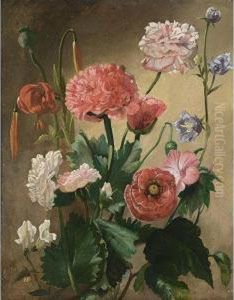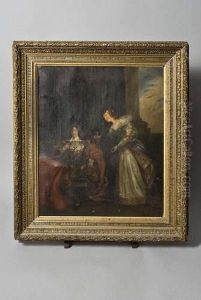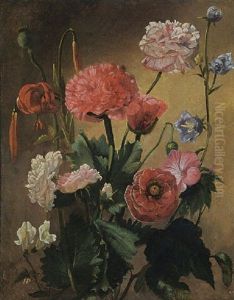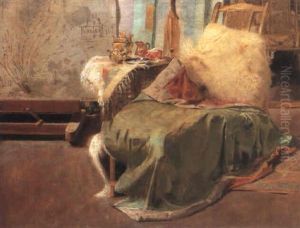Pierre Saint-Ange Poterlet Paintings
Pierre Saint-Ange Poterlet, born in 1815, was a relatively obscure figure in the world of 19th-century French art, whose life and career, despite the scarcity of widespread recognition, offer an intriguing glimpse into the artistic milieu of his time. Not widely known among the pantheon of celebrated artists from this era, Poterlet's contributions to art, albeit modest, reflect the broader movements and trends that characterized French painting during his lifetime, particularly the shifts towards Romanticism and Realism.
Poterlet's early life, much like his professional career, is shrouded in a certain degree of mystery, with limited documentation available on his formative years. It is known, however, that he pursued his artistic training in Paris, the epicenter of European art during the 19th century. Paris, at this time, was a melting pot of artistic ideas and philosophies, ranging from the dramatic and emotionally charged works of the Romantics to the emerging focus on everyday life and social realities that would eventually define Realism.
Throughout his career, Poterlet navigated these evolving artistic landscapes with a degree of adaptability, though he never quite achieved the fame or commercial success of his contemporaries. His works, which included both paintings and sketches, often depicted scenes of rural and urban life, capturing the changing face of France as it underwent rapid industrialization and social upheaval. Despite the quality of his work, Poterlet struggled to gain significant recognition, overshadowed by the towering figures of the era such as Eugène Delacroix, Jean-François Millet, and Gustave Courbet.
Poterlet's later years were marked by continued artistic output, though he remained on the periphery of the French art scene. He died in 1870, at the age of 55, leaving behind a modest body of work that, while not revolutionary, offers valuable insights into the less-celebrated corners of 19th-century French art. Today, Poterlet's legacy, encapsulated in the few works that have been preserved, serves as a testament to the diverse and dynamic nature of this period in art history, reminding us of the myriad voices that contributed to its richness, beyond just the well-known masters.



